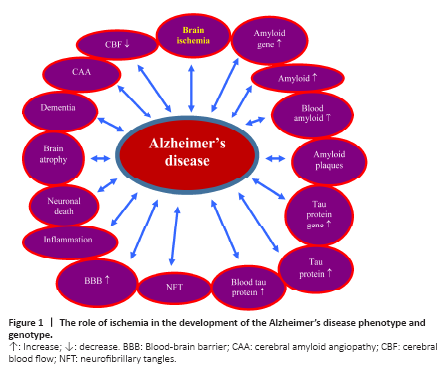神经退行性病
-
Figure 1|The role of ischemia in the development of the Alzheimer’s disease phenotype and genotype.

Thus, research clearly indicates that amyloid plaques and neurofibrillary tangles do not initiate AD and are only two of the many degenerative changes that occur in this disease. The above data suggest that continuing this approach will not solve the problem of the etiology of AD. These data clearly suggest that we should seek alternative views on the etiology of AD that are currently potentially under consideration, such as brain ischemia. We suggest that in order to thoroughly understand the etiology of AD, the amyloidocentric theory should be abandoned, without ruling out the role of amyloid. Experimental and clinical studies on brain ischemia provide ample evidence that ischemia is involved in the development of the phenotype and genotype of AD, suggesting that brain ischemia studies may be useful in elucidating the pathogenesis of AD (Figure 1) (Pluta et al., 2009; Kiryk et al., 2011; Gemmell et al., 2012; Lo et al., 2019).